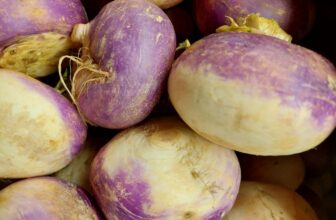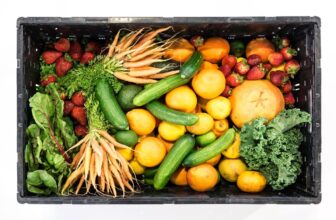Growing your crops can be an excellent way to provide for yourself and your family. However, not everyone has access to rich, fertile soil. Fortunately, some crops can grow in poor soil conditions. Here are three crops that you can grow in poor soil:
- Root vegetables, such as carrots, potatoes, and turnips, can grow in poor soil. They are hardy crops that can survive in soil with low nutrient levels. They are also good for breaking up compacted soil, which can be beneficial for other crops.
When planting root vegetables, make sure to loosen the soil to a depth of at least 12 inches. This will allow the roots to penetrate the soil and access nutrients. You may also want to add organic matter to the soil, such as compost, to improve its quality.
- Legumes, such as beans and peas, are also good crops for poor soil. They are nitrogen-fixing plants, which means they can convert atmospheric nitrogen into a form that can be used by plants. This can improve soil quality and provide nutrients for other crops.
When planting legumes, make sure to inoculate the seeds with rhizobia bacteria. These bacteria help the legumes to fix nitrogen and improve soil fertility. You may also want to plant a cover crop, such as clover, after harvesting the legumes to further improve soil quality.
- Herbs, such as thyme, oregano, and sage, can also grow in poor soil conditions. They are hardy plants that can tolerate low nutrient levels. They are also useful for culinary and medicinal purposes.
When planting herbs, make sure to choose a sunny location and loosen the soil to a depth of at least 6 inches. You may also want to add organic matter, such as compost, to improve soil quality.
Some crops can grow in poor soil conditions. By choosing the right crops and taking steps to improve soil quality, you can grow your food even if you have poor soil. Remember to also rotate your crops, practice companion planting, and mulch your soil to help maintain its fertility.
Improving soil fertility for your crops
Fortunately, there are several methods you can use to improve soil fertility with materials you may already have on hand.
- Composting is the process of breaking down organic matter, such as food scraps, leaves, and grass clippings, into nutrient-rich compost. While you may not have access to professional composting equipment, you can still do home composting on a small scale by creating a compost pile or bin. Simply layer organic materials with soil and water regularly to keep the pile moist. Over time, the materials will break down into compost that you can use to fertilize your soil.
- Manure: Animal manure is an excellent source of nutrients for your soil. If you live in a rural area, you may have access to livestock manure from cows, horses, or chickens. Even if you don’t have animals of your own, you can often find free or low-cost manure from nearby farms or stables. Be sure to let the manure age for at least six months before using it on your garden to allow any harmful bacteria to die off.
- Cover crops are plants that are grown specifically to improve soil health. They are often used in agriculture to prevent erosion and suppress weeds, but they can also add nutrients to your soil. Some popular cover crops include clover, buckwheat, and winter rye. Simply plant the cover crop in the fall, and let it grow over the winter. In the spring, turn the plants under the soil to add organic matter and nutrients.
- Eggshells are an excellent source of calcium, which is essential for plant growth. Simply crush the eggshells and sprinkle them over your garden soil. The eggshells will break down over time, releasing calcium into the soil.
- Coffee grounds are high in nitrogen, which is essential for plant growth. They are also slightly acidic, which can help balance the pH of your soil. Simply sprinkle the coffee grounds over your garden soil or mix them into your compost pile.
By using these methods, you can improve soil fertility and grow healthy crops without access to professional fertilizers or compost. Remember, gardening and farming take time and practice, so be patient and keep experimenting with different techniques until you find what works best for your soil and crops.




